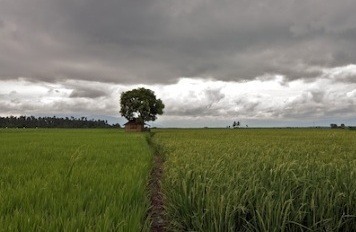Page 1 of 2As an agricultural country, irrigation in the Philippines is of dire importance. More than one third of the country’s nearly 90mn inhabitants depend on farming and fishing for a living
Irrigation is also a great necessity for many Filipinos who has regarded agriculture as the foundation of their lives.
Data from the National Irrigation Administration (NIA) show that the country has about 10.3mn ha of agricultural lands. Out of this, around 3.1 million ha are considered irrigable, with up to three per cent slope and primarily devoted to rice and corn. But a recent study by the World Bank revealed that about 6.1 million ha as irrigable, including areas that are relatively more difficult to irrigate and up to eight per cent slope.
As of December 2009, NIA record shows that about 1.54 million ha of the 3.1 million ha have been developed for irrigation. In the last two years, NIA, in its website, has not released any figures to confirm if these areas or more have indeed been irrigated. But judging from agriculture’s performance from 2010-2011 wherein productivity growth was not sustained, a perceptible factor might be the lack of adequate irrigation systems in the countryside.
According to NIA, there are three types of irrigation systems in the country: national irrigation systems (NIS), communal irrigation systems (CIS) and private irrigation systems (PIS). The NIS are large and medium irrigation schemes basically operated and maintained by NIA where beneficiaries are charged with irrigation service fee for the services rendered in the delivery of water. In the 1980s, joint management of portions of national systems with irrigators (IA) took effect.
CIS are small-scale schemes and constructed with the participation of farmer-beneficiaries thru their IAs. The operation and maintenance of CIS is turned over to IAs upon project completion subject to a cost recovery arrangement. Farmers amortize the chargeable cost for a period not exceeding 50 years at zero per cent interest. The repayment scheme is pre-arranged and acceptable to both NIA and the IA.
PIS are those constructed, operated and maintained by private individuals or groups without technical assistance by NIA or other government agencies.
NIA has also three categories of irrigation development schemes and these are: run-of-the-river diversion, storage or reservoir and pump irrigation. The run-of-the-river diversion entails the drawing of water under controlled conditions directly from the flow of rivers or streams. Storage or reservoir projects involve the construction of storage dams to impound water and released as needed to be drawn from a diversion dam downstream. Reservoir projects are usually multi-purpose to include other functions like power generation, flood control, fishery and recreation. In pump projects, water is lifted from underground or from rivers and streams. Pump systems are also common in some storage or diversion schemes to lift water to irrigate areas on higher elevation or pump groundwater to supplement available supply from the river. Environmental protection and conservation is a key consideration in the design of these various schemes.
While the government’s efforts through NIA to irrigate all farmlands are highly lauded, their actions are seemingly not enough in providing water, particularly in remote communities. In a study by Jayson Cainglet, lead facilitator of the regional work in the Asia Pacific of the Agribusiness Action Initiatives, NIA’s irrigation development hardly moved and has not even reached 50 per cent.
The Asian Development Bank – one of the country’s major sponsors in establishing irrigation facilities – cited some factors. First is the overoptimistic system development assumption where designed service areas tend to be larger than available water resources. ADB says limited hydrological records do not allow data-based hydrological analysis on water availability such as farmers much as want to convert lands, shortage of resources and value of existing crops have halted the development of these lands. Second is the inadequate operation, maintenance (O&M) and limited farmer participation. Limited O&M result in deteriorating canals and structures as well as silted and defective diversion works. According to ADB, O&M costs are expected to be covered by irrigation service fees but collection efficiency is very low. The institution also said most O&M funding is utilised for NIA personnel and little remains for O&M.
Third is deterioration of existing systems. Many of the irrigation facilities, built after NIA has been established in 1963, are aging and have accumulated damage through natural calamities such as that they are not able to fulfill the expected functions. ADB says most of these systems now require comprehensive and systematic upgrading to bring them to full operating status.




